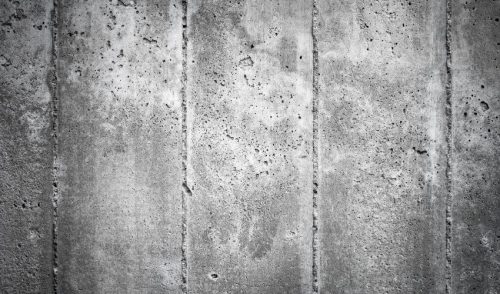
How to Fix Spalling Concrete
Spalling concrete is more than just an unsightly surface, it can cause real problems for any concrete structure. Fortunately, spalling can be easy to fix without the need to completely replace all the affected concrete.
About Spalling
Spalling, also called scaling, occurs when excess water intrudes in the concrete’s structure, creating stresses that eventually cause flaking, peeling, or pitting. In extreme cases, even deeper chunks of concrete may pop off. The excess water may get in the concrete through cracks, or the concrete could have been improperly mixed when it was laid. Improper curing or poor hardening can also increase spalling, as can the use of deicing chemicals or salts on concrete. Spalling is particularly common and widespread in areas with extreme freezing and thawing cycles, when water expansion in the concrete will multiply the pressure and force to expel the spalls.
Spalling is a common problem anywhere concrete is laid. It is often seen on patios, driveways, paths, and sidewalks, but can also be found in wet basements and garage floors, as well as on pool decks or next to water features. Spalling can even happen on concrete walls, pillars, and other structures.
Problems With Spalled Concrete
A few small flakes loosened from a large concrete surface may not seem like much of a problem, but once spalling begins, it is even easier for more moisture to enter the concrete and the spalling will spread. While surface spalling is only an aesthetic problem that damages visual beauty and curb appeal, deeper spalling weakens the concrete’s foundation and can cause structural problems. Weakened concrete is more susceptible to cracks and crumbling, and vertical structures such as walls or columns may entirely collapse if spalling becomes severe.
Fixing Spalling Concrete
There are several ways to fix spalling concrete. First, determine how severe the problem is. If the spalls penetrate less than one-third of the depth of the concrete, a patch or repair can correct the issues. If deeper spalls or pits are present, however, it may be best to completely remove the concrete and pour a new foundation.
If repairs are possible, the entire spalling area can be resurfaced with a half-inch overlay. This is best for large areas with extensive spalling, and will rejuvenate the concrete to a like-new appearance. Smaller areas with just a few spalls can be patched without resurfacing the entire area, though the patches may be more noticeable.
For the best repairs on either large areas or smaller patches…
- Power wash the area to be repaired well, removing all debris, grease, and other loose material. This will help ensure the best bond between the overlay or patch and the existing concrete.
- Use the appropriate resurfacing mix or concrete patch compound that matches the existing concrete. This will provide the strongest results and longest lasting repairs.
- Follow all instructions for the mix or patch, including working in appropriate climate conditions (temperature, moisture, etc.) for the compound to set up properly.
- Prefill any deep pits or large spalled areas first, so it will be easier to level the entire repaired area smoothly and uniformly.
- Extend any patches at least 4-6 inches beyond the damaged area to ensure a tight bond and full coverage of the spalled area as the new concrete dries and shrinks.
- Level the repaired area well, and allow it to cure and harden completely before resuming use. This could take several days, depending on the material used and the climate conditions.
Small spalls could be repaired in a matter of hours, while larger areas may take several days to completely repair. Be patient with the work, as ample curing and hardening time is essential to ensure a good repair that will last for years.
Preventing Spalling
It can be difficult to completely prevent spalling, particularly in areas that are subject to harsh winters. There are steps you can take, however, to minimize spalling and keep your concrete looking its best for years.
- Consider professional concrete installation for large or very visible surfaces where spalling is a greater risk.
- Ensure the concrete has adequate control joints in its structure so cracks can be controlled and spalling will be more difficult to start.
- Apply sealant to keep water from entering the concrete, and reapply the sealant as often as needed (every few years, or even every year) to keep it effective.
- Minimize or avoid the use of deicing salts and chemical compounds on the concrete, which can disrupt seals and accelerate spalling.
- Ensure proper drainage around the concrete so water is not pooling on the surface or next to the edge, which could saturate the concrete so it will more easily spall.
- Adjust sprinklers to avoid spraying the concrete and saturating it with too much water.
All concrete can develop cracks and some spalling is inevitable, particularly in colder climates and as concrete ages. With proper installation and conscientious care, however, you can protect your concrete and keep it looking like new for many years.


















